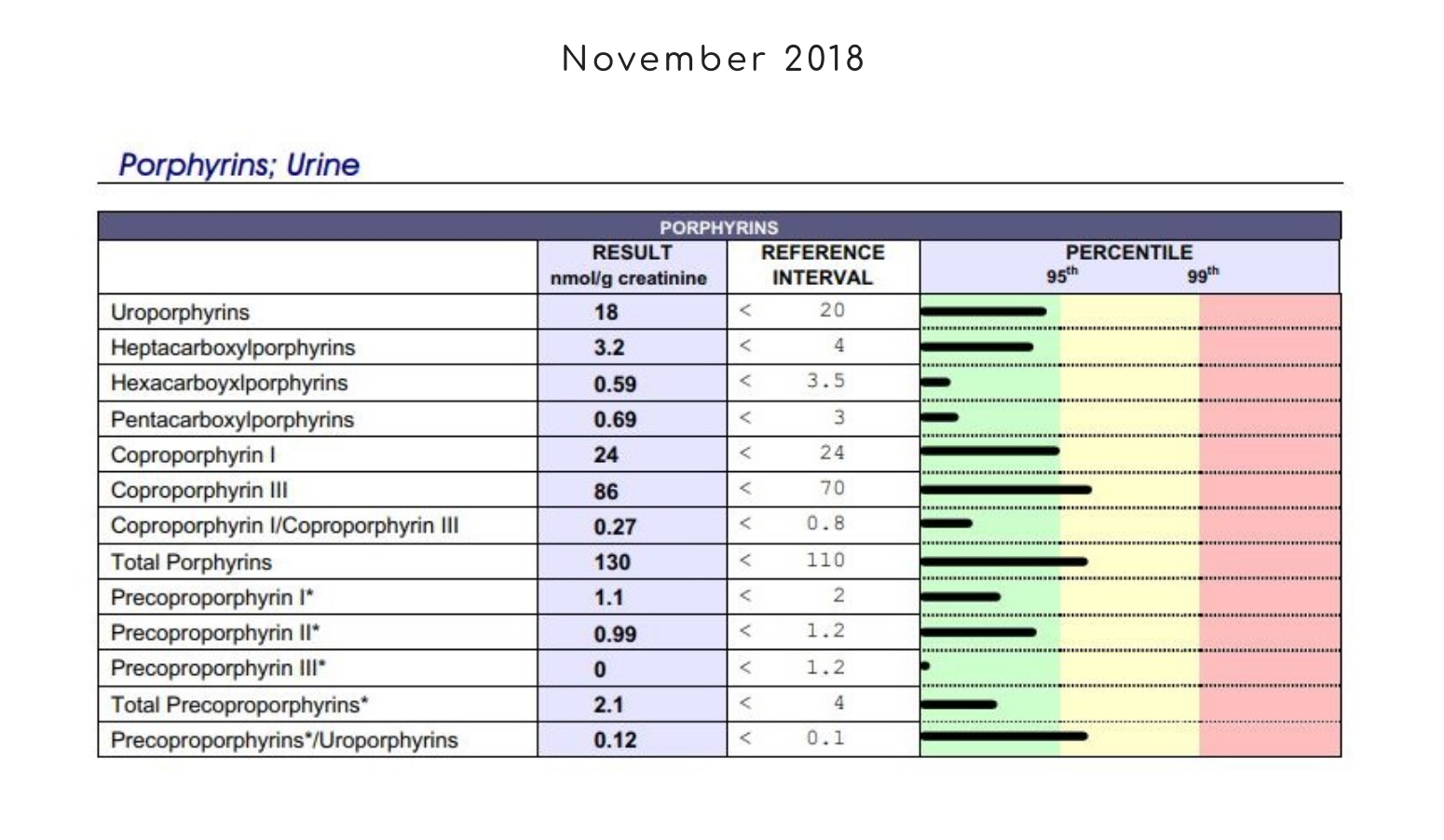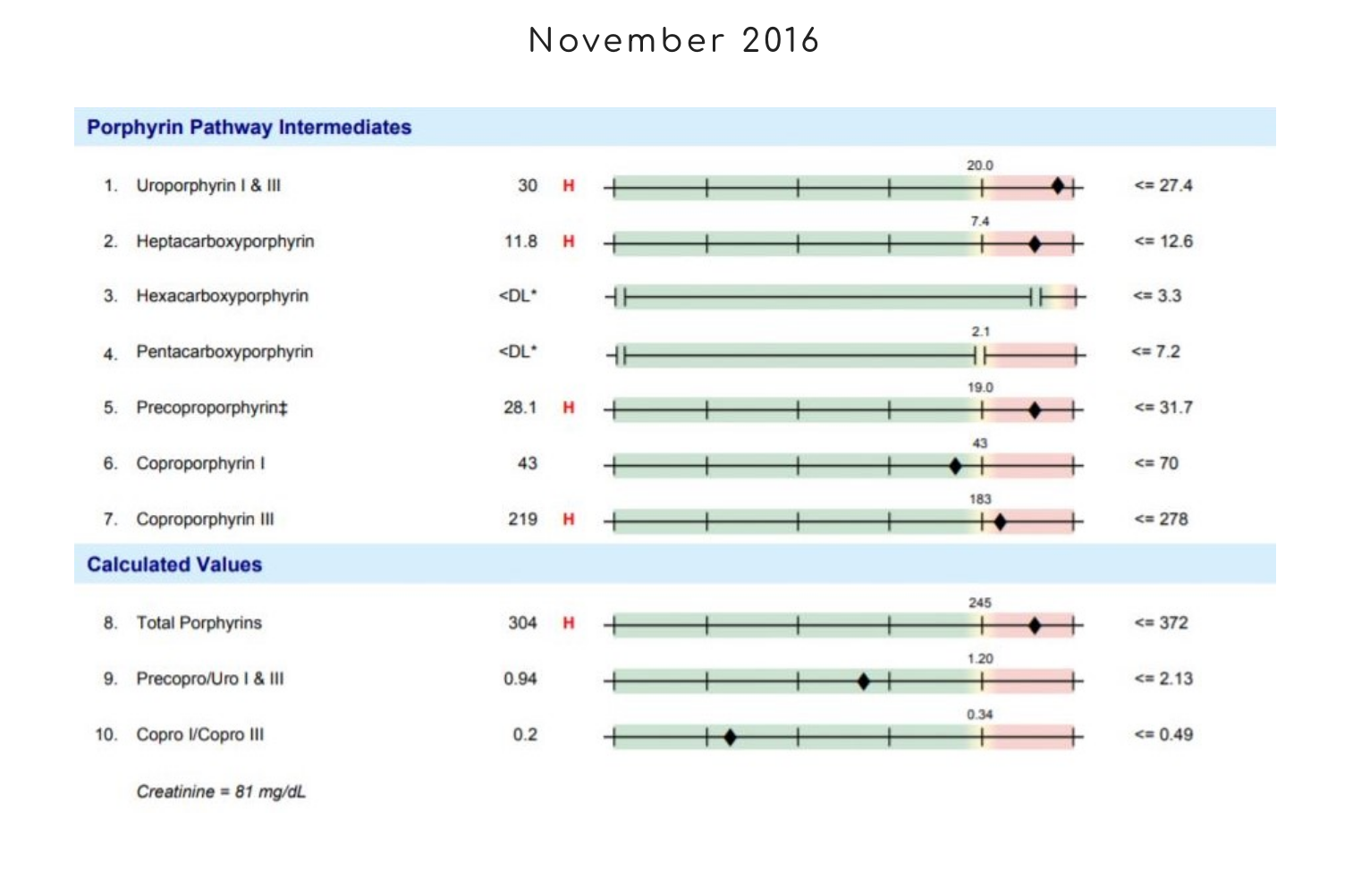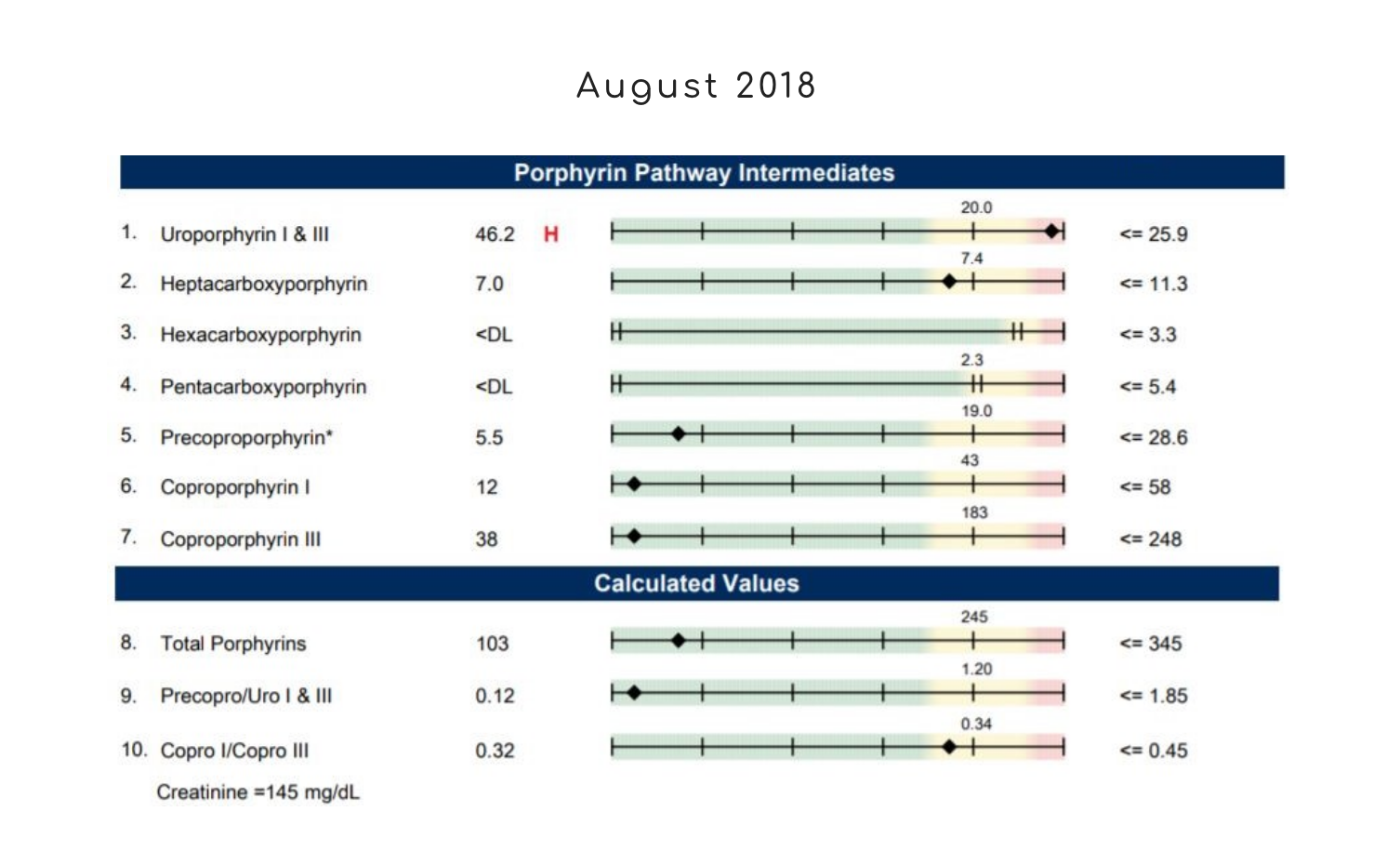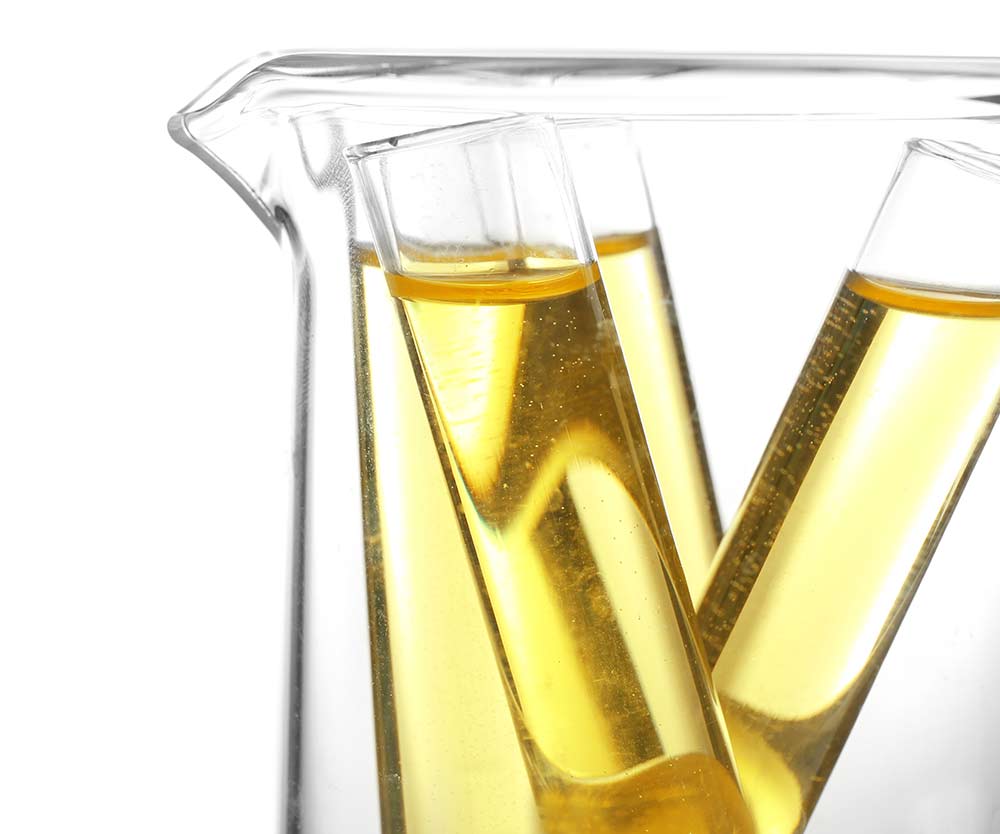TESTING OPTIONS FOR METAL BODY BURDEN
Before urinary porphyrin testing became available to functional practitioners, the most common methods for assessing metal body burden included Hair Mineral Analysis (HMA) or a urinary chelation challenge test using chemicals such as DMPS or DMSA. The downside of using these methods is that mercury and other toxins have the ability to “hide” in the body, and thus urinary excretion and hair samples may not always be a reliable measurement of persistent body burden.
The use of DMPS or DMSA as a chelating agent has also become controversial in some circles due to the possible harmful effects on the kidneys and the mobilization of heavy metals without adequately supporting the whole detoxification system. This often leads to side-effects or adverse reactions in those with compromised detoxification pathways which are not pleasant.
Hair Mineral Analysis (HMA) is another method which has its pro’s and con’s. This is definitely a method where you have to know how to interpret correctly as it is not as straight forward as it seems. I’ve seen many of these misinterpreted which can have huge ramifications for the direction of treatment.
IAOMT (International Academy of Oral Medicine and Toxicology) provides a good explanation of what urinary porphyrins are and why it is such a good measurement to assess the biochemical impact of metals and toxins on our bodies, and thus indicative of its presence.
But I’ll provide a brief explanation.
URINARY PORPHYRINS IN METAL DETOXIFICATION
Urinary porhyrins are oxidized intermediate metabolites of heme biosynthesis (red blood cell formation) that may serve as biomarkers of disorders in heme production. In layman’s terms, this is the biochemical process of making red blood cells. There are many steps in this process as you’ll see further below and it’s when these steps are not fully completed that we end up with porphyrins in the urine. And off course, if this is the case, we need to find out what is interfering with these steps along the way.
Having high levels of urinary porphyrins may indicate:
- Possible genetic disorders
- Poor nutritional status
- Oxidative stress
- High level exposure to toxic chemicals or toxic metals
But levels of porphyrins may also be affected by:
- Alcohol
- Sedatives
- Analgesics
- Antibiotics
- Estrogens and oral contraceptives
SOME EXAMPLES…
I’m going to show you an example of this, and to make it easier for you to understand I colour coded the markers so you can see what the different markers are representative of.

Having high levels of urinary porphyrins may indicate:
- Possible genetic disorders
- Poor nutritional status
- Oxidative stress
- High level exposure to toxic chemicals or toxic metals
But levels of porphyrins may also be affected by:
- Alcohol
- Sedatives
- Analgesics
- Antibiotics
- Estrogens and oral contraceptives
Notice that in this sample we had high levels of:
- Coproporphyrin III
- Total Porphyrins
- Precoproporphyrin III
- Precoproporphyrins/Uroporphyrins
The pattern we see here is one more likely of lead interference, but certainly also includes some of these other environmental toxins and metals as well.
But let’s also look at the ratio’s of Porphyrins, Coproporhyrins and Precoproporhyrins. Why?
Because Uroporphyrinogen forms Coprophyrins, and Coproporphyrins can either form Precoproporphyrins or Porphyrins. So, if we measure the ratios between these compounds it gives us an indication of the enzyme function responsible for these conversions.


I’m going to show you another example, this time from a different laboratory. This sample was taken from a young autistic boy.


You will notice that there was a big gap between testing, but it doesn’t mean that it took this long to get these porphyrin levels down and improve heme synthesis. It just happens to be the time frame this was tested in.
But again, we can see the levels of precoproporphyrin, coproporphyrin I and III, and total porphyrins come down a lot with the correct treatment, and not just within the reference range but with some of the markers coming right down to the bottom of the reference range.
Why is this important?
BENEFITS OF PORPHYRIN TESTING
Even though urinary porphyrins may not be a “direct” measurement of metals in the body, it gives us real information on enzymatic pathways that may be inhibited, with a likely cause being metals. Especially if we start looking at the ratio differences and patterns.
And this kind of testing also doesn’t involve using chelating agents, whether chemical or natural, being a simple urine test that doesn’t involve any needles or complex instructions that can be performed both with adults and children.
And why do we want to test for and correct this?
Well, if we just look at the simple fact that this is the pathway for heme or haemoglobin synthesis, it makes sense that this pathway has to work well for our red blood cells to be healthy so that oxygen can be carried through our body to all our cells.
Our brain needs oxygen to function.
Everything needs oxygen to function.
Metals that may be involved in inhibiting these pathways will also inhibit other important biochemical pathways in our bodies such as methylation. There’s just too much to write about metals and their influence on our biochemistry, and it’s not the purpose of this post.
Rather I would like you to take from this that testing for urinary porphyrins is just another method to consider when measuring for these exposures and also the progress of treatment.




